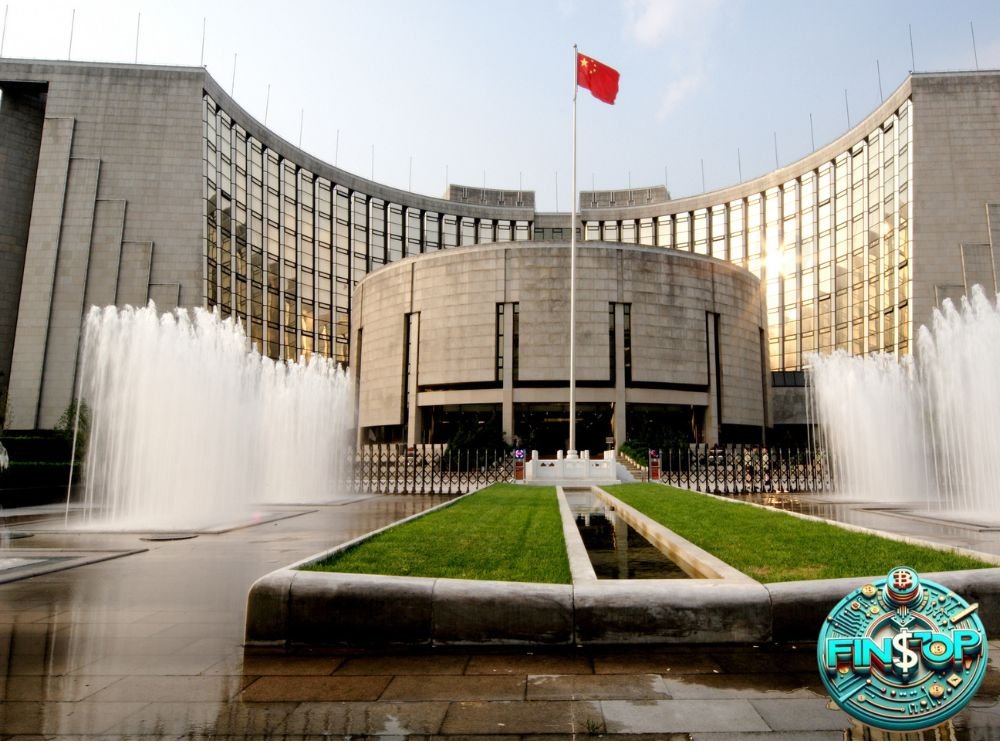Central Banks to Monetary Policy

Defining the Approaches of Central Banks Towards Monetary Policy
Economies are handled by the central banks, through monetary policy, which involves among other things the setting of the interest rate and the supply of currency. Central banks have inflation, employment, gross domestic product, and economic growth, among other factors to enhance their effectiveness. The primary constituents of most central banks are price stability and economic growth, but the methods and policies differ from country to country depending on the political system prevailing, existing institutions, the respective economy, and other factors. The paper aims to analyze the practicing of monetary policies of different countries central banks in order to highlight the similarities and differences in the practices.
Monetary Policy and the Roles of Central Banks
Regarding the formulation and implementation of the monetary policy, Central Banks to Monetary Policy are the foremost bodies. Following are some of their core functions in most instances:
Prevention of Inflation:
- In light of the fact that the concern is for price level stability,
- as the policy goal is price stability over a long period in order to address the issue of price stability,
- it is essential….(to have targeting of our inflation rate.)
Mitigating foreign exchange fluctuations: Currencies appreciate or depreciate in value relative to other currencies due to currency market dynamics. However, this viewpoint only relates to the supply-demand for assets with reference to currency changes of the target country.
More or less direct control of the financial sector: Fertile Tapestried systems actively need to plan out the implementation of necessary steps to ensure that day to day banking of the customers is not interrupted as well as regaining their focus is maintained.
With Established Mechanisms In Relation To Monetary Policy Of Central Bank Nation:
- In the case of the United States, it is the Federal Reserve System that happens to be in control.
Standards regarding the economic policy structure:
One of such areas is in the effort to improve price level and avoid unemployment at the same time. In pursuing such objectives the Federal Reserve makes use of several instruments including among others quantitative easing (QE), open market operations and the federal funds rate.
Policy concerning the interest rates:
As this rate is regulated by the Federal Reserve, the cost of borrowing and consequently expenditure by other than market of consumers could be contingent upon the rate. Whenever the economy goes into a downturn, the Federal Reserve can reduce them in order to get the economy moving again and when inflation is too high, they can raise them.
In July 2020,
- the Federal Reserve reduced those rates because there was the onset of the Covid 19 pandemic,
- globally at the same time there was a great recession because of that – so the economy was detrimental,
- In 2008, the US CB engaged in QE by buying billions of dollars of government securities to put them into the economy.
Next Steps:
The expectations regarding the Federal Reserve’s monetary policy actions have a significant impact on the market and the activities undertaken in the economy as a consequence.
Concerning the Eurozone, the ECB (European Central Bank)
Economic Policy Framework:
Article 105 (1) of the Treaty establishes the primary objective of the ECB as determining the rate of inflation to be below, but close to two percent while the Key concern on the Stability of Prices in the Eurozone is topping. It is also important to mention that the ECB endorses the other economic objectives of the European Union thereby contributing toward economic stability.
Supplementary measures:
The ECB decided to apply a negative rate of interest to the excess reserves held on deposit by commercial banks with a view to promoting lending and thus stimulating economic activity.
Asset Purchase Programmes:
The other central banks including the Fed have carried out asset purchase programmes with a view to increasing the liquidity in the market, thereby enhancing the economic growth. This was the case mainly during the periods of the Coronavirus pandemic and Euro Area sovereign debt crisis.
Procedures for Targeted Long Term Refinancing Operations (TLTROs):
Enabling an economy that requires very little from the bank which aims to extend their loans towards the private sector, specifically small and medium enterprises, this is the case of the European Central Bank (ECB) as the boar loans.
Japanese central bank
Economic Policy Framework:
There are two monetary objectives laid down by BoJ: You get to ensure both price stability as well as economic growth but without avoiding suffocation of Japan’s economy through deflation. Economies’ long standing deflation trend forced Japan to adopt what regards to orthodox monetary policy as unorthodox.
Control of the Yield Curve (YCC):
- In their effort to boost credits and investments,
- the Bank of Japan has as part of its monetary policy,
- pegging the government bond yield of ten years maturity at zero percent to try and reduce the cost of borrowing.
The QQE, or Quantitative and Qualitative Monetary Easing, Programme:
- In a way to target specific inflation targets but at the same time increase the liquidity,
- a component of this is the acquisition of very high volumes of assets which includes government bonds.
NIRP Policy:
Same as the case of the central bank of Japan, the European central banks have negative interest rate policy as one of their tools in the monetary policy to motivate banks into lending more than hoarding cash.
BoE – UK is the central bank of the United Kingdom.
Structural Economic Policy:
- The Bank of England, also the BoE,
- is somewhat of a significant branch since it has two goals,
- one is wellbeing of the government by ensuring there are policies targeted at enabling sustainable economic development and creation of employment opportunities,
- the other is in maintaining inflation at a target of 2%.
Changes in Monetary Policy:
The UK has an Official Bank Rate which is decided by the BOE and it influences the rates on savings and borrowing. The Bank of England adjusts the rate to cope with the varying economic conditions in attaining its inflation targets.
Assets Payments (APF):
With the program of Follow-Up Asset Purchase Framework (APF), the central bank of England managed to increase money supply and improve economic activities through buying government and corporate bonds.
Future conjecture:
Such instructions are necessary for the BoE to meet its monetary policy targets, including inflation targets, in a more efficient way over the medium term.
The PBoC (China) defines itself to be the People’s Bank of China. Economic Policy Structure: The “People’s Bank of China” is focused on multiple objectives which include acceptable level of prices, sustained growth and balance of payments. The scope of the PBoC’s policies is quite different from central banks in the West because of the structure of the economy in China and the dominant position of the State. Currency Rate Management: To ensure export lead growth along with the internal economic stability, the Chinese Yuan’s exchange rate to other currencies is managed by the People’s Bank of China (PBOC). Not all SGPs monitor exchange rates. Controlling the Currency Rate: The exchange rate of the Chinese currency with other foreign currencies is managed by the PBOC in order to promote an internally balanced growth based on exports. Not all SGPs monitor exchange rates. Specialised Loan Programs: In line with the goal of empowering hi-tech or infrastructure, the PBoC lend out loans in support of fostering the growth of the economy as a whole.

The Role of Central Banks in Formulating Monetary Policy – A Case Study
Anti-Inflation Strategy:
The role of dealing with inflation and employment altogether rests on the Federal Reserve and the Bank of England, as the latter is said to have an inflation bias and assigns only importance to targeting inflation as well as the level of inflation. In controlling eroding demand, the People’s Republic of China approaches this issue from a policy balance perspective, however the BoJ has always had to respond to the peril of deflation.
Policy on Interest Rates:
It has always been the practices of the United States and England’s central banks to make alterations in the rates of interest to vary economic activities in such a way as to stimulate or restrain it, while the BofE and the B of Japan have used a rather unusual method of including negative rates in the usual rules to revive the economy. There is no major deviation, so to speak, of the People’s Bank of China policy in its role as a central bank which adopts this standard strategy that does accompany with changes in reserve not only with rates of interest.
Substitutes:
To a greater or lesser degree depending on the circumstances and some economic arguments, the Federal Reserve, together with the central bank of the Europe, the Bank of England and the Bank of Japan have resorted to quantitative easing. More orthodox methods of control such as yield curve control and time limited repurchase agreement occupation systems or TLTROs have been utilized by the BoJ and the ECB in Japanese and in present international community and economic resources. Of late, the People’s Bank of China has focused its attention on the management of exchange rate and direct form of credit measures as its major targets.
Open dialogue and future direction:
Time and again, the 2007 – 2008 economic crisis and its aftermath changed the usefulness of forward guidance in a measured manner throughout the world. The two institutions the BoJ and the PBoC seem to discuss less on future courses of policies as often as they should do because of some institutional and cultural reasons.

Results for Domestic and International Markets
An Emerging Strong Economy
It is no doubt the actions of the Fed in respect to the COVID-19 event, and also the measures taken regarding the 2008 world recession, were crucial for the United States economy stability, as well as its later expanding influence to different spheres and regions around the world. Important factors in the battle against low inflation and deep recession were the asset purchases and negative interest rates introduced by the Japanese and euro central banks.
International Money Markets
Actions of central banks of large economies can have deep affected repercussions. One of the links between taking a capital market approach and practicing international finance is the appreciation and the rate of exchange applied to the United States Federal Reserve System. The stability of the renminbi in the People’s Republic of China affects trading activities around the world, especially for countries whose economies supply their market surplus with excessive exports to China.
Obstacles and Remarks
Others view quantitative easing and negative interest rates as potential market imperfections caused by financialization that encourage excessive speculation and worsen the income gap among people. Additionally, the monetary policy of the People’s Bank of China has been described as authoritarian and has raised issues of transparency and market control.
Examining the Ideologies and Strategies that are employed by Central Banks Regarding Monetary Policy
The factors that shape the decision made by the managing bodies of central banks are vastly different. Some CNB see inflation as a primary goal, while other seem to have many objectives such as employment and even stability. Each economy’s efficacy is affected by the peculiar challenges that it has to deal with. There are such discrepancies that regulators of the global economy, investors, and corporations need to understand. Central and global economy is largely determined by the set of policies employed by the central banks depending on the needs of the economy at the time.

Examining the Strategies of Central Banks with Regards to Monetary Policy
The determinations that have been made by central banks are always to be dependant upon distribution of power, state of the economy, and framework of the organization itself. Some central banks emphasize more on keeping inflation at bay as the main goal, while some try to balance several objectives such as employment and stability. The specific challenges that each economy has to overcome greatly affect its effectiveness. All these distinctions must be understood by all the players across the world as they deal with the realities of the globe. The policies formulated and followed by central banks , which are being evolved day by day due to changes in economic factors, will shape the future of the national economy and the entire global economy.










You made some really good points there. I checked on the net to learn more about the issue and found most individuals
will go along with your views on this website.
I’ve been exploring for a bit for any high-quality articles or
blog posts on this sort of area . Exploring in Yahoo I
ultimately stumbled upon this website. Studying this information So i’m satisfied to convey that
I have an incredibly just right uncanny feeling I found out
exactly what I needed. I such a lot for sure will make sure to don?t
disregard this website and give it a look on a continuing basis.
Incredible! This blog looks exactly like my old one!
It’s on a entirely different subject but it has pretty much
the same layout and design. Excellent choice of colors!
Hey great website! Does running a blog such as this take a large amount of work?
I’ve absolutely no understanding of coding but I was hoping to start my own blog in the near future.
Anyhow, should you have any ideas or tips for new blog owners please share.
I know this is off subject but I simply wanted to ask.
Kudos!
I’m very pleased to uncover this great site. I wanted to thank you for ones time for this wonderful read!!
I definitely liked every bit of it and i also have you saved as a favorite to look at new information in your web site.
If some one wants expert view concerning blogging and site-building afterward i advise him/her
to go to see this web site, Keep up the fastidious job.
[…] of clean water was a crucial factor in military strategy. It was common practice for both American and British armies to locate their camps close to water sources during the Revolutionary War. Being […]